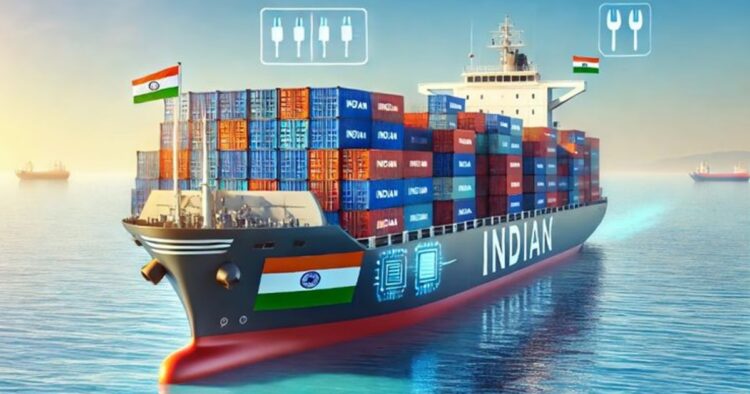KEY POINTS
- Over 40% of advanced lab equipment in India comes from the US, now facing delays and higher costs
- New US export controls are stalling Indian research in AI, biotech, and quantum tech
- India’s shift from Chinese to Western tools after 2020 has doubled procurement challenges
The United States is planning to put new tariffs on several Indian exports, including pharmaceutical ingredients, specialty chemicals, electronics, and precision instruments. While this move is being explained as a way to protect American industries and reduce reliance on other countries, it could have serious effects on Indian scientific research. Even though this seems like a trade issue, it may deeply impact Indian labs, researchers, and science start-ups in the long run.
A large portion of the advanced scientific equipment used in India’s research labs comes from the United States. According to data from India’s Department of Science and Technology, more than 40% of high-end lab tools in Indian institutions are imported from the US. These include important devices like genome sequencers, spectrometers, cleanroom tools, and specialized software. If tariffs are placed on these products, or even on the materials used to make them, it will raise their cost and cause delays in delivery, which will slow down or even stop ongoing research.
In addition to tariffs, the US has been tightening its export rules, especially on technologies that can be used for both civilian and military purposes, known as “dual-use” items. This means Indian research institutes must go through long procedures to get approvals before they can import certain items. Earlier, equipment arrived within weeks, but now it takes months due to added paperwork and strict end-user checks. Research groups working on sensitive and emerging technologies, such as AI, biosciences, quantum computing, and nanotech, are suffering the most.
Even though India and the US are working together under big programs like the US-India Initiative on Critical and Emerging Technologies (iCET), the ground reality is very different. These programs aim to boost cooperation in science and technology. But in real life, researchers are facing delays, restrictions, and extra costs that are making such cooperation difficult.
After the 2020 Galwan Valley clash, India reduced its imports from China. This had a major effect on Indian research labs, especially smaller ones. Earlier, many Indian labs used Chinese scientific instruments that were cheaper and readily available. These included microscopes, PCR machines, centrifuges, and other basic tools. Once imports from China were restricted, labs had to look to Western products, which are more expensive and take longer to arrive.
Now Indian researchers face a two-sided problem. On one hand, Chinese supplies are restricted due to India’s policies. On the other hand, US equipment is becoming harder to access because of tariffs and new export rules. This has created serious issues for Indian science. Many labs are dealing with stalled projects, delayed installations, and increased costs. According to a 2023 report by FICCI and NITI Aayog, over 60% of deep-tech and biotech start-ups in India face delays in getting equipment because of global trade issues.
India has experienced these problems before. After the 1974 and 1998 nuclear tests, the country was hit with heavy technology sanctions from Western nations. These restrictions blocked access to important items like cryogenic engines, supercomputers, and satellite parts. Indian scientists eventually developed many of these on their own, but it took time and drained resources. The lesson was clear: when technology is denied, innovation slows down.
During the COVID-19 pandemic, India became a world leader in vaccine production. But even then, it faced trouble getting key components such as glass vials, bioprocess bags, and sterile filters. Most of these came from the US and Europe, and their export bans made India’s work harder. This again showed how much India’s science and health systems depend on foreign supplies.
India wants to become a global knowledge and innovation hub by the year 2047. To reach this goal, it must make sure its scientific progress is not interrupted. The government should act now with smart policies. First, scientific research must be directly included in trade agreements. Labs and research centers should be given fast-track clearance to import essential equipment. These tools should be treated like medicines or food when it comes to avoiding high tariffs.
India also needs to reduce its dependence on imports by developing more of its own scientific tools. This doesn’t mean copying advanced products overnight. Instead, India should encourage joint ventures, offer incentives for technology transfers, and create partnerships between public and private sectors. Real independence in science can only come from long-term planning and investment.
India should also push for a new global rule, through platforms like the World Trade Organization (WTO), to treat scientific tools as global public goods. Just like how food and medicine are protected in international trade, research tools should also be kept free from heavy tariffs and political restrictions.
Scientific Progress Is a National Asset
Science is not just for researchers. It supports a country’s economy, education, defence, health, and future. It must not become a victim of trade wars or geopolitical tensions. If countries must impose tariffs, they should do so wisely. But the tools of science must remain free, accessible, and protected, for the benefit of all.
As the world changes and global politics become more complex, India must protect its scientific community. Whether it’s a student working in a lab or a start-up creating new tech, science in India needs support, not obstacles.

















Comments